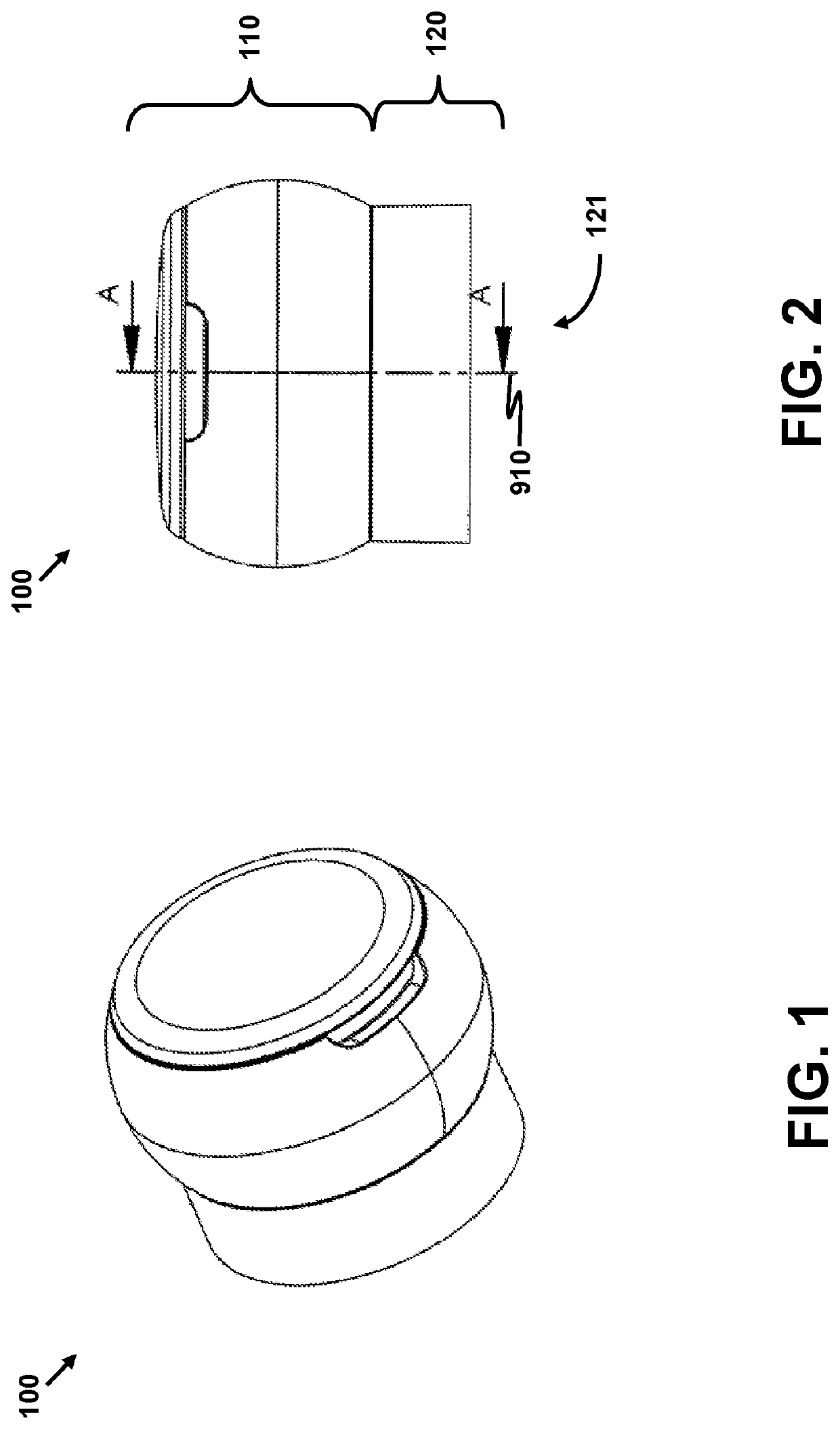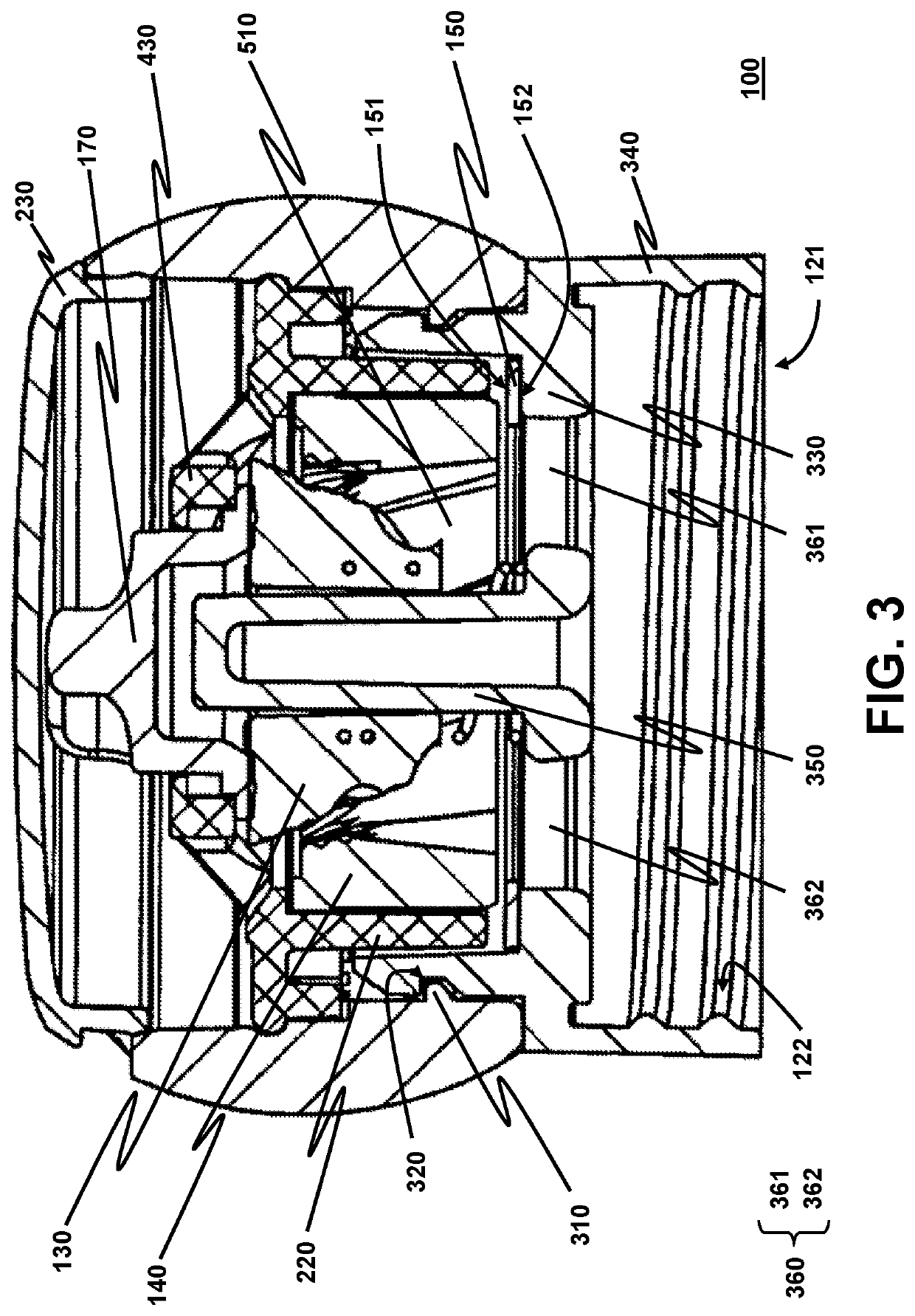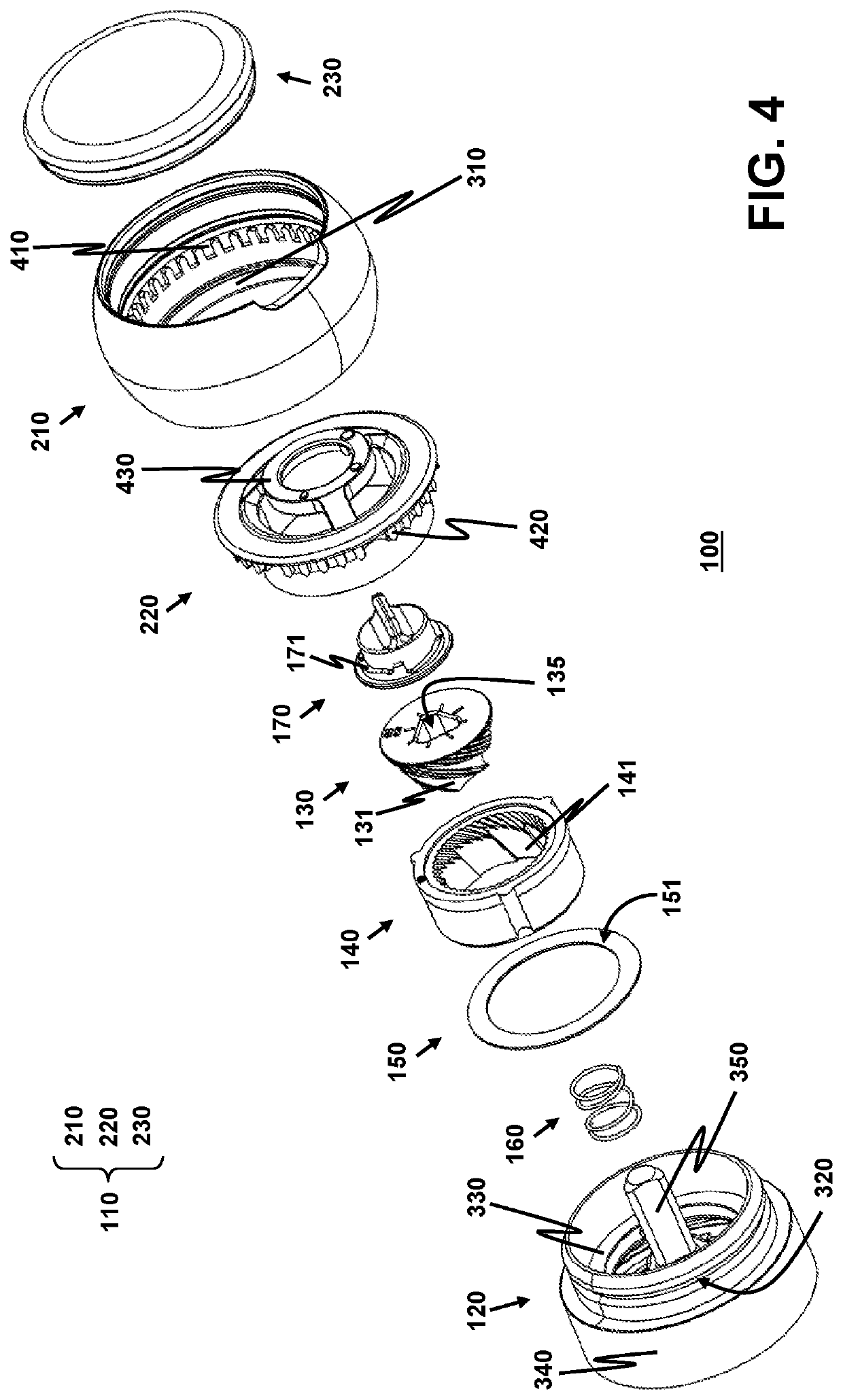Grinder
a technology of grinding machine and grinding blade, which is applied in the field of grinding machine, can solve the problems of affecting the quality of grinding machine, and affecting the production efficiency of grinding machine,
- Summary
- Abstract
- Description
- Claims
- Application Information
AI Technical Summary
Benefits of technology
Problems solved by technology
Method used
Image
Examples
Embodiment Construction
[0035]As used herein in the specification and appended claims, the term “avoid” or “avoiding” refers to any method to partially or completely preclude, avert, obviate, forestall, stop, hinder or delay the consequence or phenomenon following the term “avoid” or “avoiding” from happening. The term “avoid” or “avoiding” does not mean that the method is necessarily absolute, but rather effective for providing some degree of avoidance or prevention or amelioration of consequence or phenomenon following the term “avoid” or “avoiding”.
[0036]A first aspect of the present invention is to provide a grinder for grinding solids into fine grains where the grinder has the following advantages. The grinder is configured to avoid wear debris from dropping into the fine grains. Furthermore, the grinder is designed not to include a rigid structure for suspending and precisely positioning any burr inside the grinder in order to keep the manufacturing cost low. The disclosed grinder is particularly use...
PUM
 Login to View More
Login to View More Abstract
Description
Claims
Application Information
 Login to View More
Login to View More - R&D
- Intellectual Property
- Life Sciences
- Materials
- Tech Scout
- Unparalleled Data Quality
- Higher Quality Content
- 60% Fewer Hallucinations
Browse by: Latest US Patents, China's latest patents, Technical Efficacy Thesaurus, Application Domain, Technology Topic, Popular Technical Reports.
© 2025 PatSnap. All rights reserved.Legal|Privacy policy|Modern Slavery Act Transparency Statement|Sitemap|About US| Contact US: help@patsnap.com



